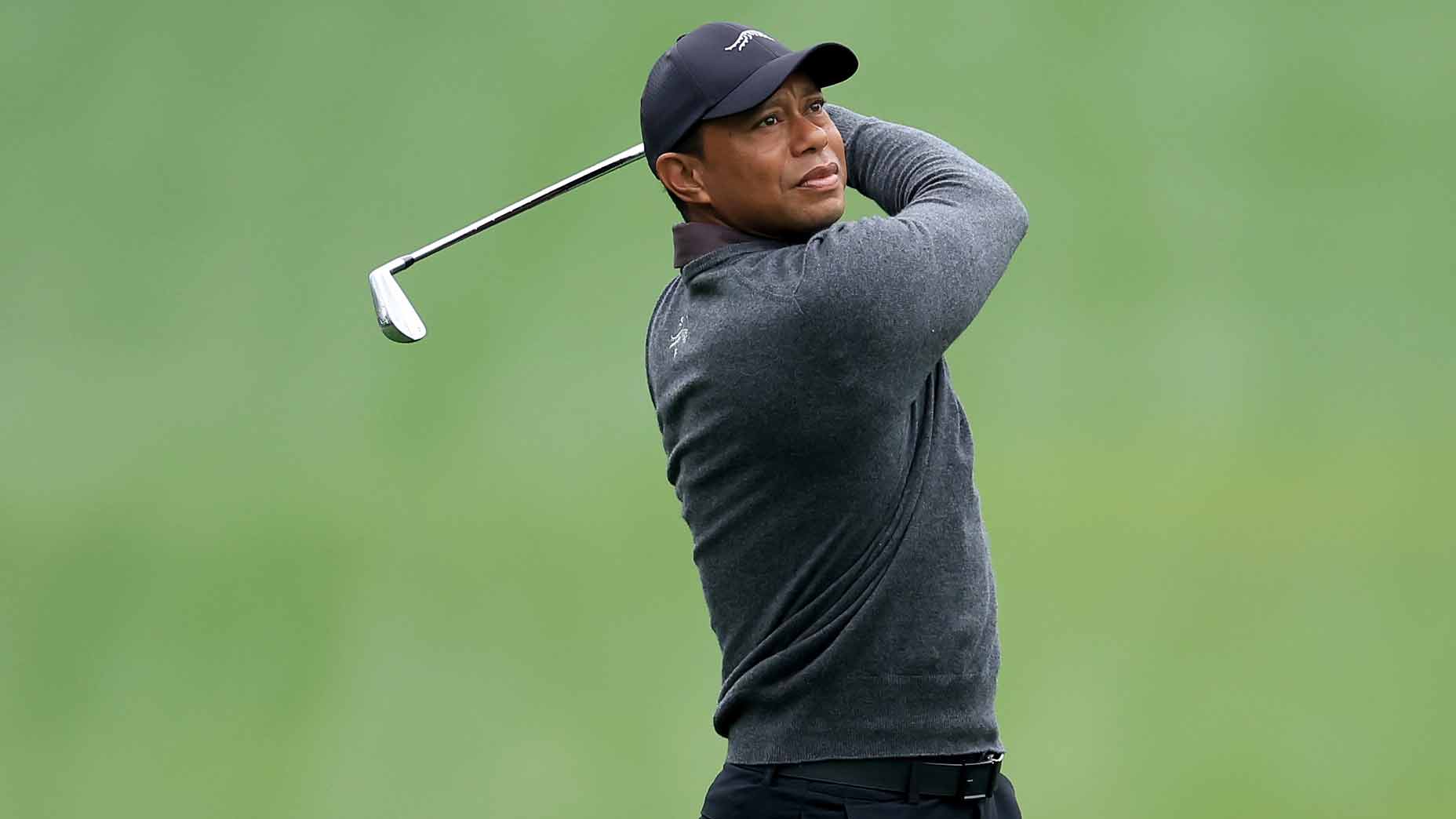
Tiger Woods comes to Augusta National looking for his 24th straight made cut — but can he win?
Getty Images
AUGUSTA, Ga. — Tiger Woods hasn’t missed a cut at the Masters since he was 20 years old. The year was 1996, and the lanky sophomore from Stanford fired a pair of 75s to miss the weekend by six shots.
“The score didn’t show it,” Woods said at the time. “But I played better this year than I did last year.”
The “last year” was his first Masters appearance. He made the cut that time, and earned low amateur honors in the process. The next year he returned — and authored a statement victory that sent shockwaves through the sport; a 12-shot victory that still sits in the record books.
Woods has played 23 Masters since. Not once has he failed to qualify for the weekend.
“It’s consistency, it’s longevity, and it’s an understanding of how to play this golf course,” Woods said this week. “You still have to go out and execute it, but there’s a lot of knowledge that goes into understanding how to play it.”
If Woods can make the cut again this week, he’ll add another record to his collection: Most consecutive made cuts at the Masters. After 23 in a row, it’s hard to imagine a world in which he won’t make the cut — but Woods has never been one for participation trophies. And when he steps to the first tee on Thursday morning, he’ll have his eyes on a much larger prize.
“If everything comes together,” Woods said. “I think I can [win] one more.”
Woods’ confidence and mental strength have long been some of his strongest assets, and he’s always said he won’t enter a tournament unless he believes he can win. But while Woods might believe he’s got a shot this week, the chances of him actually pulling it off are slim.
4 reasons Tiger *won’t* win the Masters
1. Balky health
Let’s start with the obvious: Woods’ health. It’s no secret that Tiger isn’t in peak physical shape. Since his latest Masters victory in 2019, he’s undergone surgeries on his knee, back and ankle — not to mention the variety of procedures he endured following his near-fatal car accident.
Since the car accident, Tiger has played in seven tournaments — but he has more WDs (three) than made cuts (one). His body has been through hell, and it’s a fact that Tiger isn’t afraid to admit.
“I hurt every day,” he said in his pre-Masters presser.
The raw swing talent remains in Tiger’s DNA. He’s proven as much in limited reps over the last few years. The issue is staying healthy enough during the grind of a tournament week to survive four days and remain near the top of the leaderboard.
“Some days I just feel really good,” Tiger said. “Other days, not so much.”
2. Quality of the field
Woods has bested plenty of Hall of Famers throughout his decorated career. From Phil Mickelson and Vijay Singh to Brooks Koepka and Rory McIlroy, the Big Cat has downed some formidable opponents on his march to major championship victories.
The trouble for Woods is that many of those conquests came at the height of his powers. In the 2000s, when he was borderline unbeatable, there was little doubt in his chances when he stepped to the first tee — even when he was in the middle of a perceived slump or swing change. At this year’s Masters, Woods is nowhere near what he once was, and he’s got to battle a heady list of competitors smack dab in the middle of their primes.
The biggest (and most obvious) hurdle is Scottie Scheffler. The 2022 Masters winner is striking the ball like no one has since Woods, and he seems to have finally figured his putter out. If Woods were in his prime, it would be a heck of a battle. In today’s age, though, Scheffler is a much more complete golfer than the aging Woods.
Jon Rahm is another titan Woods has to contend with. The defending champ is still a top-five player in the world, and he’s hungry to hang onto the green jacket for another year. There’s also the likes of Rory McIlroy, Brooks Koepka, Patrick Cantlay and Wyndham Clark (among others). Woods might not’ve had trouble with them in his prime, but he isn’t the same golfer he was back in the day. Beating that sort of roster in his current state is quite the ask.
3. Low ball speed
Tiger can still hit the ball plenty far, evidenced by his average poke of 304 yards off the tee at the Genesis Invitational. However, when you take a look under the hood at the ball speed numbers, there is some reason for concern.
While hitting on the practice tee both Monday and Tuesday, Tiger averaged just 171 mph of ball speed with his driver. Not only is this two mph slower than PGA Tour average ball speed, but it’s also much slower than the average ball speed of the last 10 Masters champs, which you can see in the table below.
| Year | Winner | Avg. Ball Speed |
|---|---|---|
| 2023 | Jon Rahm | 181.2 |
| 2022 | Scottie Scheffler | 178.2 |
| 2021 | Hideki Matsuyama | 172.8 |
| 2020 | Dustin Johnson | 178.7 |
| 2019 | Tiger Woods | 173.1 |
| 2018 | Patrick Reed | 173.5 |
| 2017 | Sergio Garcia | 175.1 |
| 2016 | Danny Willett | N/A |
| 2015 | Jordan Spieth | 168.7 |
| 2014 | Bubba Watson | 183.5 |
| Avg. | 176.1 |
For context, Tiger averaged 182.2 mph of ball speed during the 2007 season when he won seven times, including a major. By 2018 his ball-speed average had dropped to 178.23, but he was still well above Tour average. He dropped off even more in 2019 to 173.1 mph, but won the green jacket anyway. However, that was five years ago. That was pre car accident and ankle fusion. That was when he could practice on a consistent basis. The Tiger of 2024 doesn’t have the same pop.
Augusta might be a second-shot golf course (and Tiger might be the greatest iron player of all time) but in today’s era of pro golf, every yard off the tee matters — and even more so at Augusta National. Every one of the last 10 Masters champions — including Tiger in 2019 — has been above Tour average in ball speed for the season in which they won. At 171 mph, Tiger is 2.4 mph slower than Tour average ball speed in 2024.
The speed numbers don’t portend well for his green jacket hopes.
4. Limited reps
The key for winning a major is peaking at the right time. Everything has to be clicking during the week of the tournament to get the win. Timing that peak isn’t just a guessing game, though. Pros adjust their routines in the lead-up to major weeks in an effort to get everything in sync at just the right time.
With Tiger’s physical state, though, getting in the needed reps just isn’t possible.
“My practice sessions certainly aren’t what they used to be,” Tiger said. “I used to live on the range or live on a short game facility and just be out there all day. That’s no longer the case. So I just have to be more focused on when I do get a chance to go out there and practice and really grind out and make every shot count because I just really don’t have the ball count in me anymore.”
It’s one thing to win a major at 48 years old. It’s another to do so when you’re not able to get in a full schedule of practice.








